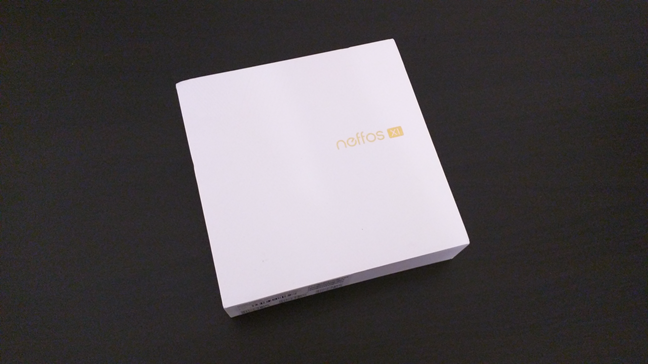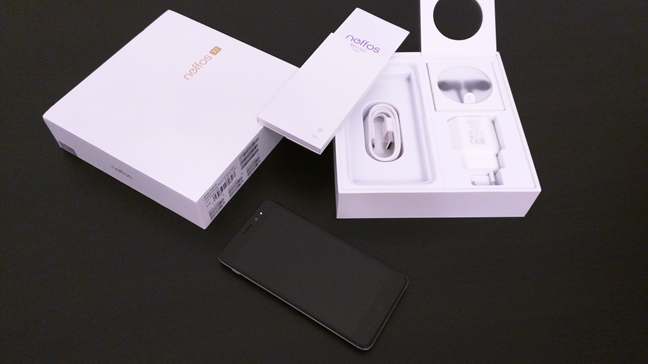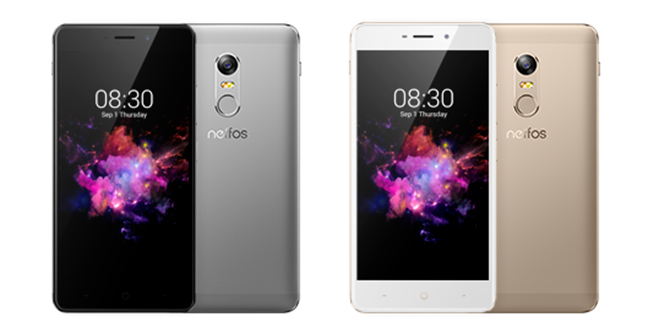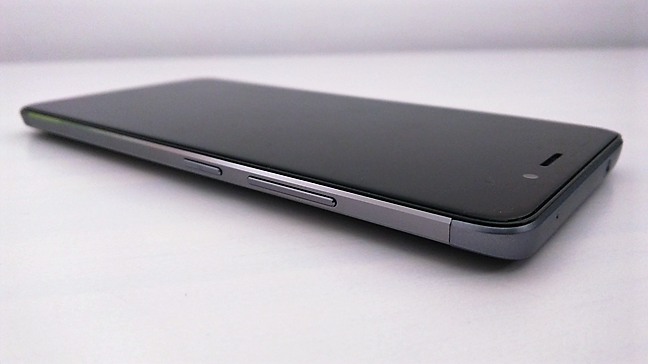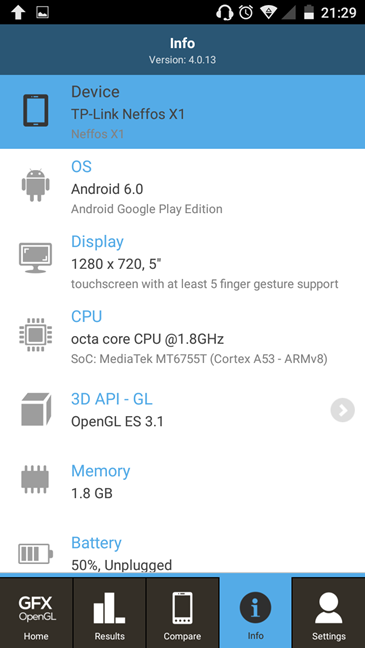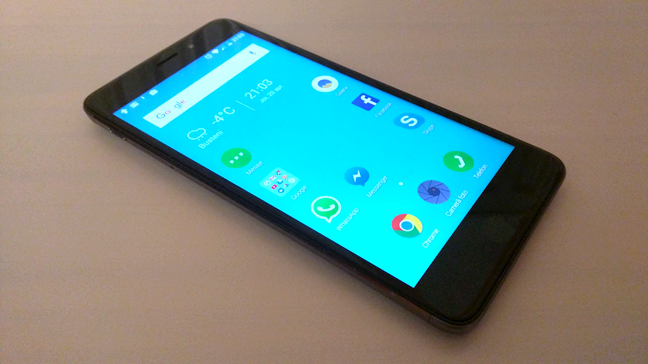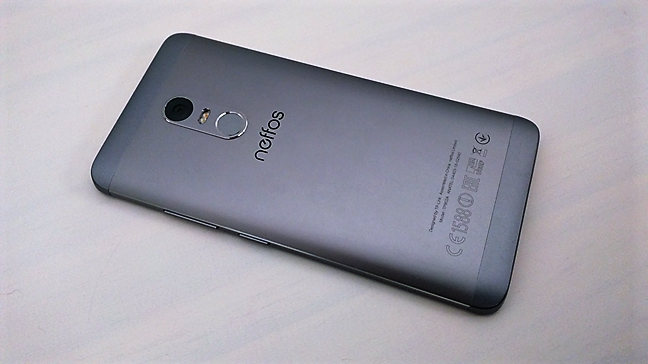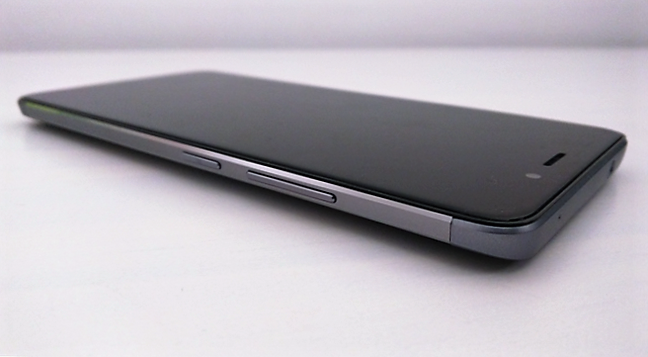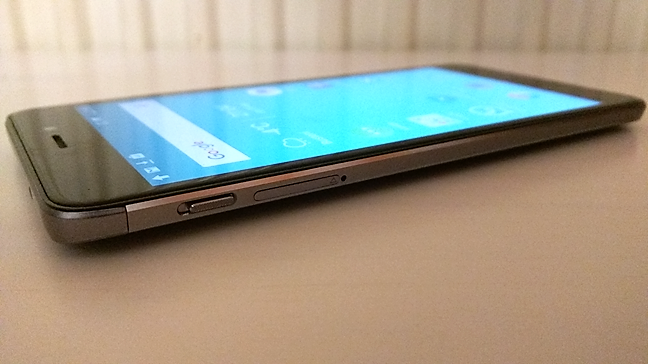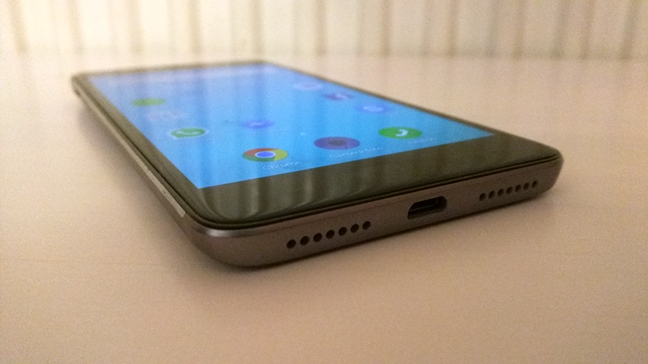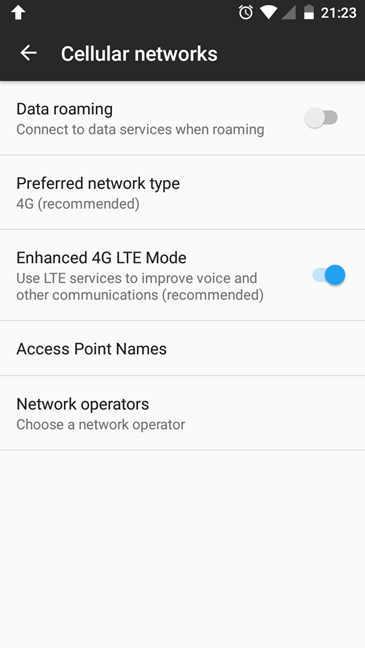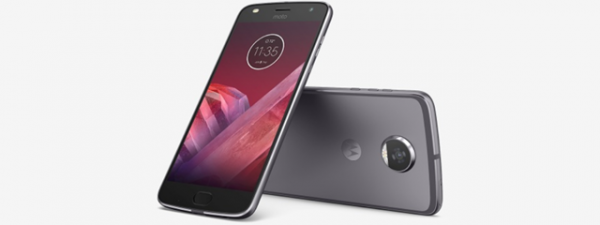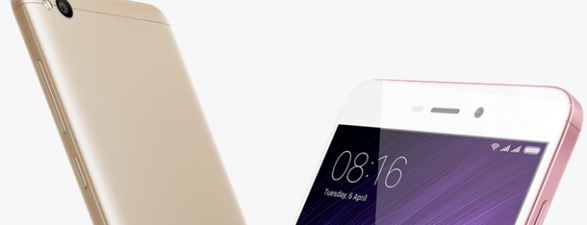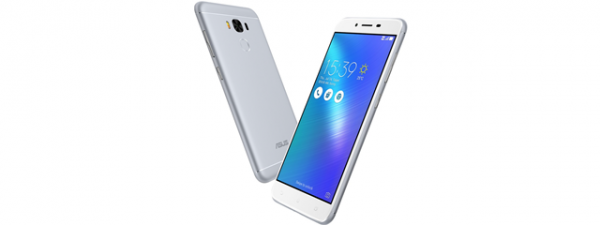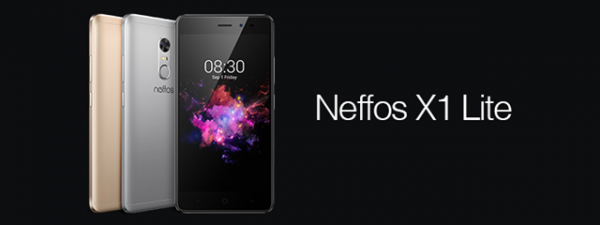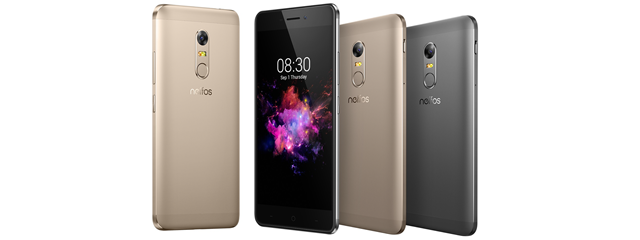
TP-Link is a company best known for the networking devices that they manufacture. However, they're also present on the smartphone market, and they recently launched a new series of smartphones: Neffos X1 and Neffos X1 Max. Over the last week or so, we tested the Neffos X1 and today, we'd like to share our opinion about this smartphone. Is the Neffos X1 a good choice? What does it have to offer in a market that is so crowded with affordable smartphones? Read this review and find out:
Hardware specifications and packaging
The TP-Link Neffos X1 comes in a beautiful box made from high quality cardboard. It's a square shaped box, with a pattern of small embossed dots and a large X made from thin engraved lines. The Neffos X1 name is printed on the top of the box.
On the back of the package, you'll find a sticker with information regarding the smartphone inside. You'll see things like the exact model name of your Neffos X1, the size of its screen and the mobile networks that it supports. Inside the box, you'll find the smartphone, its power charger and detachable micro USB cable, a pair of headphones, the documentation and the warranty card.
The TP-Link Neffos X1 smartphone is available in two different color variations: Cloudy Gray and Sunrise Gold. The model we tested is the Cloudy Gray variant, a color option which fits most users.
The Neffos X1 smartphone has a screen of 5 inches, with an HD resolution of 1280 x 720 pixels and a pixel per inch density of 293.7 PPI. The display uses IPS, which means that its viewing angles are wide and the color reproduction should be very good. The display is covered with 2.5D glass, which protects it against scratches and dust. 2.5D means that the glass has no hard edges, but fades into the case gradually.
If you're curious about its internal hardware, the TP-Link Neffos X1 is powered by a Helio P10 octa-core processor from MediaTek. This processor has 4 cores running at 1.8GHz and 4 cores running at 1GHz (MT6755M 4*Cortex-A53 1.8GHz + 4*Cortex-A53 1.0GHz). The graphics are handled by a Mali-T860MP2 video chip running at 550MHz.
TP-Link manufactures the Neffos X1 smartphone in two variations depending on the amount of RAM memory and storage space. You can get it with either 2GB of RAM memory and 16GB of storage space, or with 3GB of RAM memory and 32GB of internal storage space. Regardless of the version you have, you can extend the internal storage space with a microSD card of up to 128GB. The Neffos X1 smartphone that we tested came with 2GB of RAM memory and 16GB of ROM (storage) memory.
The rear camera on the TP-Link Neffos X1 is powered by a Sony IMX 258 sensor with a maximum resolution of 13 megapixels, f2.0 aperture and 0.2s phase-detection autofocus. On the front, you get a selfie camera with 5 megapixels and beautifying effects.
As for the connectivity options, the TP-Link Neffos X1 comes with a micro USB 2.0 port, a 3.5 mm audio jack, a Bluetooth 4.1 chip and a wireless network card that's capable of connecting to 2.4 GHz and 5 GHz Wi-Fi networks that use the 802.11 a/b/g/n wireless standards. It doesn't offer support for the modern 802.11ac standard.
The TP-Link Neffos X1 smartphone is a Dual SIM device and supports 2G/3G WCDMA/4G LTE on both SIM cards, in Dual SIM Dual Standby. That means that even if both SIM cards are active when you're not using them, once you take a call on one of them, the other becomes inactive. And, if you add a microSD card to the smartphone to increase its storage space, you should know that it will occupy the slot of the second SIM card - which means that you won't be able to use two SIM cards on your smartphone. The TP-Link Neffos X1 takes advantage of a variety of sensors. It has an accelerometer, a compass, a proximity sensor, an ambient light sensor, and a fingerprint scanner on the back.
TP-Link equipped their Neffos X1 smartphone with a 2250mAh battery that should help it get through a whole day's use. We'll see if that's true later in this review.
As for its size, the Neffos X1 is 5.6 inches (142mm) in height, 2.8 inches (71mm) in width, and 0.31 inches (7.95mm) in depth. It weighs 4.76 ounces, or 135 grams.
If you would like to see all the official specifications of this smartphone, visit this page: TP-Link Neffos X1 Specifications.
Although it's an entry-level Android smartphone, the TP-Link Neffos X1 comes in a premium package and includes hardware powerful enough to deliver a good user experience.
Design and build quality
Although it's an affordable smartphone, the TP-Link Neffos X1 smartphone looks like a premium device. First of all, this is a smartphone with a metal unibody case, which is rather impressive for this price tag. We've also reviewed the previous TP-Link Neffos C5 smartphone and although they're both affordable devices, the Neffos X1 is in another league in terms of design and build quality.
The top side of the Neffos X1 is dominated by the 5 inch display. It's not Full HD, as it has a resolution of only 1280 x 720 pixels, but what's nice about the display is that it has a high brightness level that makes it easy to use even in bright light, when you're outdoors.
On the bottom of the screen, you'll find the three default Android buttons: Back, Home and Recent apps. Usually, there's not much to say about these buttons. However, in the case of the Neffos X1, there are a few features worth mentioning. First of all, they are all capacitive, meaning that they're all separate from the screen. Secondly, TP-Link didn't place them in the default Android way: instead of having Back, Home and Recent apps from left to right, the Neffos X1 has Recent apps, Home and Back, from left to right. It's not a problem per se, but it will take you awhile to get used to this arrangement. Thirdly, none of the buttons is backlit, which makes them harder to spot during the night.
Moving on to the back of the smartphone, you'll find an unadorned surface, interrupted only by the camera lenses, the dual-LED flash and the fingerprint scanner. For as long as we had this smartphone in testing, the fingerprint scanner behaved very well. Although it does misread your fingerprint once in a while, in general it picks it up very fast.
Both the back and the 2.5D glass on the screen of the Neffos X1 fades gradually into its edges, leaving no hard spots.
The other important buttons on any smartphone - the power button and the volume rocker - are all found on the right side of the Neffos X1, towards the top. The power button has a more rugged texture than the others, so it will be easy to spot even if you don't look at it.
On the left side of the Neffos X1, you'll find the SIM tray and a Mute Sound switch. The latter is not something you see on many other smartphones. However, if you've used an iPhone before, you'll probably see a similarity in design here. 🙂
The bottom edge of the Neffos X1 is home to the micro USB port and the speaker and microphone grilles positioned to its left and to its right.
Finally, on the top edge of the Neffos X1 you'll find only a 3.5mm audio jack for connecting headphones.
Although it comes at an entry-level price, the TP-Link Neffos X1 smartphone doesn't disappoint in terms of design and build quality.
The smartphone experience on the TP-Link Neffos X1
TP-Link Neffos X1 left us with a good impression in terms of phone call quality. Both we and the people we've spoken to were able to hear each other well, clear and loud.
However, the Neffos X1 falls short when it comes to the radio signal. We had no problems with it outdoors, but indoors, it didn't manage to keep a strong or even a medium intensity radio signal on our mobile network. Other smartphones we used had much better signal reception, in the same locations.
The loudspeaker found on the Neffos X1 does a good job if you want watch a movie on your smartphone, but it won't impress you if you want to listen to music. The loudspeaker's maximum volume is pretty high, but the sound lacks bass and it's a bit high-pitched. Don't hesitate to use the pair of headphones bundled with the Neffos X1, as you'll get a much better sound quality.
The TP-Link Neffos X1 performs well when it comes to multitasking. We did not manage to make this smartphone stutter or lag. Its processor seems to do very well in this area.
If you want to play games on the Neffos X1, don't expect to have an extraordinary experience. 2GB of RAM memory and MediaTek processors are not a very good combination if you want to play demanding 3D games.
Finally, the battery seems to be on the verge: 2250mAh should be enough to get you through the day if you're not a heavy user. However, if you use your smartphone a lot, you might have to charge it before the day ends.
The TP-Link Neffos X1 is a good smartphone but not a very good phone. Unfortunately, it falls short where no phone should: it has a rather poor signal reception. If you live in a big city, with good cellular coverage, this shouldn't be a problem, but if you live in a smaller city, where cellular coverage is not very good, the Neffos X1 could have a problem.
Read the next page of this review and you will find out more about the camera experience, the software installed on the TP-Link Neffos X1, its performance in benchmarks and our final verdict.


 26.04.2017
26.04.2017 